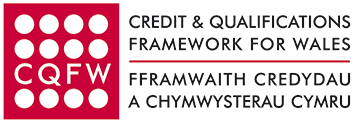| 1. |
Understand the anatomy and physiology of the skin in relation to pressure area care. |
|
| 1.1 | Describe the anatomy and physiology of the skin in relation to skin breakdown and the development of pressure sores. | | 1.2 | Identify pressure sites of the body. | | 1.3 | Identify factors which might put an individual at risk of skin breakdown and pressure sores. | | 1.4 | Describe how incorrect handling and moving techniques can damage the skin. | | 1.5 | Identify a range of interventions that can reduce the risk of skin breakdown and pressure sores. | | 1.6 | Describe changes to an individual’s skin condition that should be reported. |
|
| 2. |
Understand good practice in relation to own role when undertaking pressure area care. |
|
| 2.1 | Identify legislation and national guidelines affecting pressure area care. | | 2.2 | Describe agreed ways of working relating to pressure area care. | | 2.3 | Describe why team working is important in relation to providing pressure area care. |
|
| 3. |
Be able to follow the agreed care plan. |
|
| 3.1 | Describe why it is important to follow the agreed care plan. | | 3.2 | Ensure the agreed care plan has been checked prior to undertaking the pressure area care. | | 3.3 | Identify any concerns with the agreed care plan prior to undertaking the pressure area care. | | 3.4 | Describe actions to take where any concerns with the agreed care plan are noted. | | 3.5 | Identify the pressure area risk assessment tools which are used in own work area. | | 3.6 | Explain why it is important to use risk assessment tools. |
|
| 4. |
Understand the use of materials, equipment and resources are available when undertaking pressure area care. |
|
| 4.1 | Identify a range of aids or equipment used to relieve pressure | | 4.2 | Describe safe use of aids and equipment. | | 4.3 | Identify where up-to-date information and support can be obtained about:
• Materials
• Equipment
• Resources. |
|
| 5. |
Be able to prepare to undertake pressure area care. |
|
| 5.1 | Prepare equipment and environment in accordance with health and safety guidelines. | | 5.2 | Obtain valid consent for the pressure area care. |
|
| 6. |
Be able to undertake pressure area care. |
|
| 6.1 | Carry out pressure area care procedure in a way that:
• respects the individual’s dignity and privacy
• maintains safety
• ensures the individual’s comfort
• promotes active participation
• promotes partnership working. | | 6.2 | Apply standard precautions for infection prevention and control. | | 6.3 | Carry out the pressure area care procedure without obstruction from bedding and clothing. | | 6.4 | Move an individual using approved techniques and in accordance with the agreed care plan. | | 6.5 | Use pressure relieving aids in accordance with the care plan and any safety instructions. | | 6.6 | Communicate effectively with the individual throughout the intervention. | | 6.7 | Complete all records and documentation accurately and legibly. |
|
